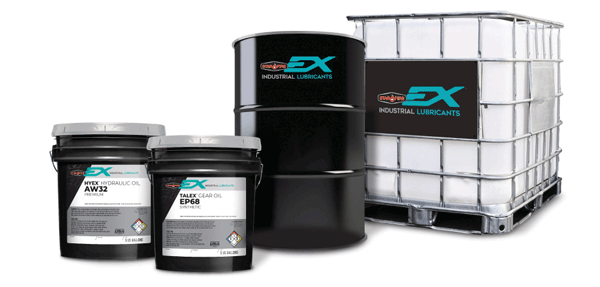Industrial LubricantsTrend Toward Sustainability
Selecting the right industrial lubricants is essential to the longevity and effectiveness of modern machinery and equipment. These complex formulations offer the protection needed to prevent damage, minimize downtime and ensure optimal performance in the toughest of conditions.
Robust and durable, today’s products must promise attributes such as wear protection, reduced friction, and excellent thermal and oxidative stability. But users are increasingly eyeing solutions that have better environmental credentials as well.
This focus on sustainability is certainly nothing new, but it has become the cornerstone of corporate strategy over the past decade and continues to gain traction in the industrial segment.
More innovative, environmentally friendly formulations are finally being seen as a viable alternative to conventional mineral oils—particularly for use in environmentally sensitive applications, such as mining and agriculture.
“The primary driver for change is consumers,” said Mike Sutton, a corporate technical fellow at Lubrizol. “In general, they want a more sustainable world. Stakeholders are pressuring companies to do the right thing. We’re all becoming more aware of the negative impacts and want to do things differently.”
The entire supply chain is being encouraged to adopt more sustainable products. ESG is playing a larger role in decision making, along with governmental regulations, programs and incentives—such as the U.S. Environmental Protection Agency’s Vessel Incidental Discharge Act (VIDA) and the EU’s Ecolabel. Environmentally acceptable lubricants—non-bioaccumulating, biodegradable and non-toxic products—have also seen real demand growth in recent years.
“The reason the industrial sector is getting so much attention is because there’s a much higher potential for industrial lubricants to end up in the environment, either by accident or leakage if used in an open system,” Sutton said.
“Perhaps the biggest change in the last few years has been the development of new additives that perform just as well as traditional additives but are more environmentally friendly. New regulation and growing expectations mean there’s increased demand for more sustainable lubricants,” he added.
Although sustainability has rapidly climbed to the top of everyone’s agenda, uptake is still arguably slower in the industrial lubricants segment compared with others, noted Matt Kriech, president of Biosynthetic Technologies and vice chair of the ILMA Sustainability Committee.
“Industrial lubricants are really all about performance. They need to be able to perform on the equipment and tools in the extreme environments they work in,” Kriech said. “Although there was a big sustainability bio push maybe 20 years ago, unfortunately the performance was not as good as conventional petroleum derived lubricants. I think that soured the industry on the whole concept of sustainable biobased products. If they’re not performing well and don’t meet standards, you’re not going to risk your expensive equipment and systems; you just can’t afford to have issues in some of these environments.”
He continued: “I think one of the reasons we’re seeing these changes now is because technology has caught up and we’re able to make high-performance lubricating base stocks that are also sustainable—so you can actually hit both buckets at once.”
The potential gains for the industrial sector are enormous, he added, particularly as these more sustainable and efficient lubricants will likely be employed across an entire factory floor or fleet of vehicles. In maritime applications, for example, improving efficiency on the fuel burn by just a few percent for several vessels can have a significant impact on performance, emissions and your bottom line.
“The biggest positive impact lubricants can have is more of what we call a ‘handprint impact’,” Sutton said. “Any time you’re improving the efficiency or durability of what you’re lubricating, you’re having a really big impact.”
How can sustainability of industrial lubricants be achieved? “I think there’s greater awareness of what is truly sustainable and as we learn more, we’re coming to understand better that it’s a little more complicated than something just being biodegradable or bio-sourced,” Sutton said. “The biggest thing right now is increasing awareness of what is beneficial for the environment, and LCA is the key tool to enable that understanding and awareness to take place.”
The next step, he said, will be lower carbon footprint lubricants—produced using recycled materials or using electricity generated from renewables. The greatest positive impacts will come over time as more recycled and biobased materials become available and the processes used to make the additives or base oils are decarbonized.
“There’s now a lot more focus on sustainability, but in the real world sustainability only has a seat at the table and is not the decision maker; there are a lot of other things that still are,” Kriech said. “Cost is still probably number one, performance is second, with sustainability maybe third. Sustainability is part of the discussion but it’s not the primary driver in all scenarios.”
Although it is unlikely sustainability will overtake these other priorities, there are niche segments where environmental and biodegradability functions are absolutely the number one consideration. Take, for example, total-loss lubricants used in marine applications or forestry.
“There’s a lot of target setting right now,” Kriech said. “Consumers want to see incremental change in a positive direction. We’re seeing a lot of work going on right now on life cycle assessments, product carbon footprints and net zero goals. I think some of that work is helping us make some of the early, easy, smart decisions to take that next step on the sustainability journey.”
With a noticeable shift toward synthetics and Group III base oils, and the development of enhanced additive technologies, users of industrial lubricants can be hopeful for more efficient, sustainable and better-performing solutions moving forward.
The challenge with today’s products is striking a balance between effectiveness and affordability. The pricing gap between conventional lubricants and their sustainable counterparts may not be the huge chasm it once was, but there is still a premium to pay for the more environmentally friendly products.
“There’s still a cost for this type of chemistry to get that kind of performance, and it’s hard to compete against mineral oil because of the scale that technology operates on. A lot of the focus has been on producing more high-performance biobased materials, so that even though there is still a cost gap, you’re getting a significant performance uplift,” Kriech said.
“There’s a big push to make biobased materials and mineral oils play well together,” he added. “The solution is not going to be 100% replacement; it’s going to be first putting 5% or 10% of a sustainable product into a mineral oil so they work together and slowly growing those percentages, making incremental positive gains to a more sustainable future.”
The truth is that “the economics and supply chains just don’t allow us to change much faster than we really are, but I do see a lot of opportunity for industrial lubricants,” Kriech said.
In this spotlight, STARFIRE showcases its new EX industrial line.

STARFIRE Industrial Line Offers EX-ceptional Performance
STARFIRE, a trusted brand for over two decades, has fast become the go-to supplier of high-performance fluids and lubricants developed specifically for the industrial segment.
With a comprehensive industrial line consisting of Hydraulic, Gear, Compressor, Grease, and Specialty Fluids, STARFIRE provides a one-stop shop for industrial applications in even the most demanding of environments.
“The STARFIRE EX Industrial line features our most robust formulations that can compete against the majors within the industry,” says Tim Wullenweber, VP of marketing and technical services at Coolants Plus, Inc.
“We introduced our new EX industrial range in January 2022 and captured many new customers who had been having extreme difficulty sourcing product during the pandemic. They tried our products and were able to save money, get great service, with shorter lead times. They soon realized STARFIRE did business in a different way, which made it easier for them to do business.”
Through its company-owned PennStar blending facility and supported by an in-house lab, STARFIRE is able to closely control its formulas and ensure that those converting from a major branded petroleum product will get the performance requirements, specifications and reliability they need.
STARFIRE’s new HYEX Hydraulic Fluids have certainly won the plaudits since their launch, with excellent performance and high levels of wear protection and service life. The broad portfolio of hydraulic products includes HYEX Anti-Wear (AW) oils with 5,000+ hours of oxidation, as well as a Premium AW Hydraulic—a high-quality water white product using Group II+ base oils and a state-of-the-art additive package that provide 6,000+ hours of oxidation life for extended protection.
Also available are special High Viscosity Index (HVI) hydraulic, Zinc Free AW hydraulic, Fire Resistant hydraulic fluids, synthetic AW hydraulic and both conventional and synthetic Rust and Oxidation (R&O) oils.
“The STARFIRE HYEX Premium AW and R&O oils are high performing, water white formulations, which is what customers have come to expect in today’s demanding industrial applications,” adds Wullenweber.
STARFIRE has also been working closely with additive companies to get OEM machine approvals, including Bosch-Rexroth approval on its Premium AW Hydraulic Oils.
The EX line also boasts a full range of conventional and synthetic Extreme Pressure (EP) TALEX Gear Oils, which cater to even the most severe gearing applications for industrial gear boxes and spur, helical, bevel and worm gear configurations subject to heavy or shock loading in industrial equipment.

The range includes CIREX compressor oils—everything from a synthetic Group III to polyalphaolefins (PAO), polyalkylene glycols (PAGs) and range of di-ester and ester oils—that boast high levels of thermal and oxidative stability to prevent corrosion and deposits. That means that no matter whether customers have rotary, centrifugal, or reciprocating compressors, a full range of synthetic fluids is available to suit their needs.
Its EPEX multi-purpose greases, meanwhile, contain EP additives, rust and oxidation inhibitors, and provide excellent mechanical stability. Available as lithium complex Hi Temp, a 3% Moly, and a calcium sulfonate option, the EPEX range offers protection at a wide range of temperatures, pressure and speeds.
Completing the EX line, the SOLEX Specialty Fluids include waylubes, heat transfer oils and fluids, transformer oil, white oils, rock drill oils, form oils and more.
No matter your needs or specifications, the EX range provides the superior performance you’ve come to expect from the STARFIRE brand.
In addition, STARFIRE offers further support and reassurance to customers through its SENTRY Fluid Analysis Program—an important part of any preventative maintenance plan that checks fluids and helps to diagnose issues that may affect performance.
Combined with industry-leading customer service and support, STARFIRE’s extensive EX industrial line is economical, proven and reliable—offering optimal protection without compromise.
Find out more about the new EX Industrial line https://starfire.com/products/ex-industrial/ or call us at 888-258-8723.
